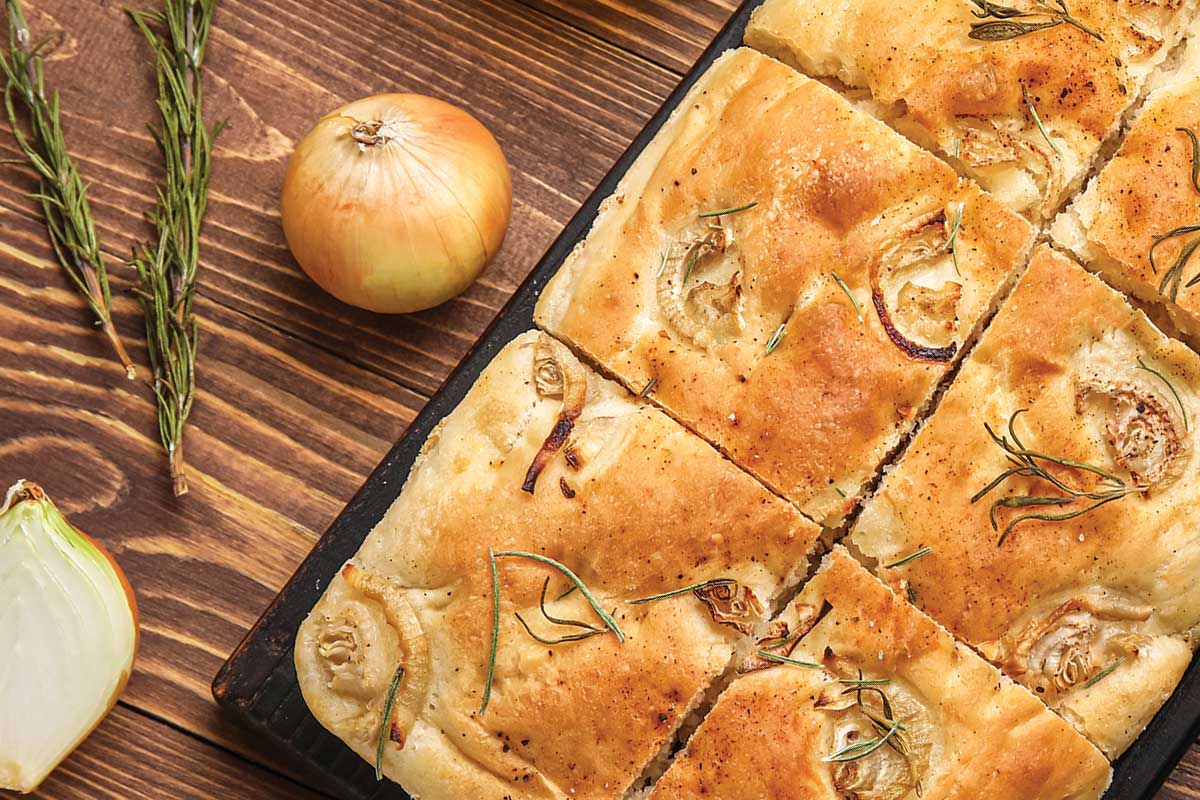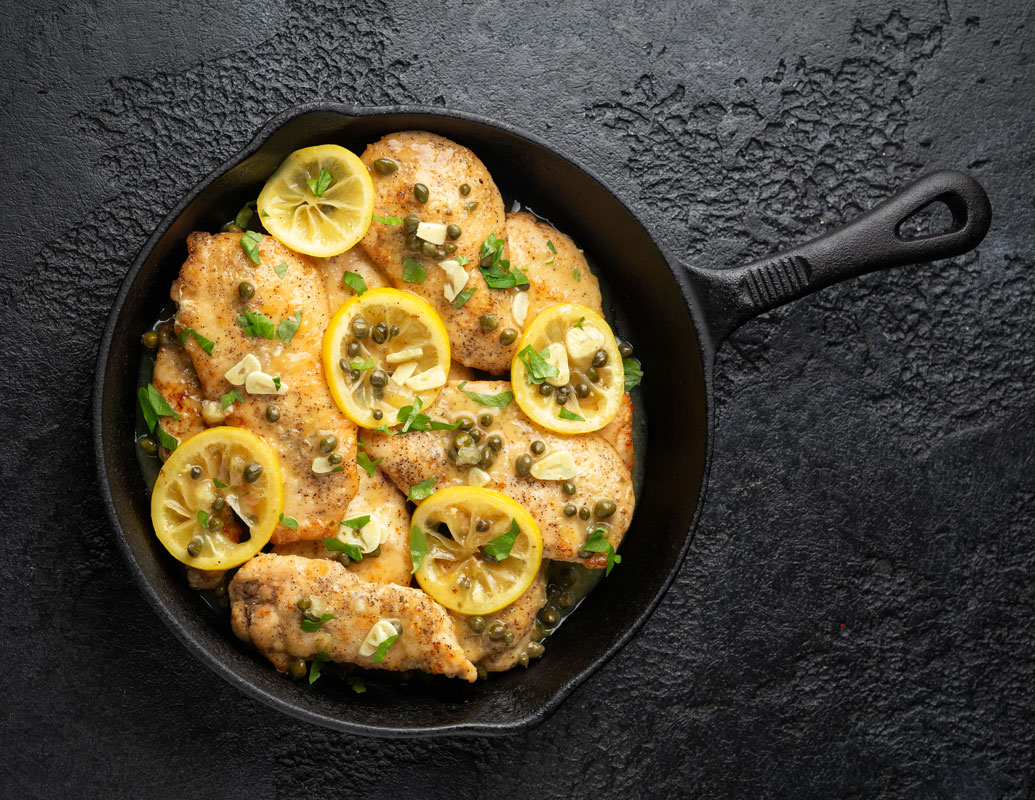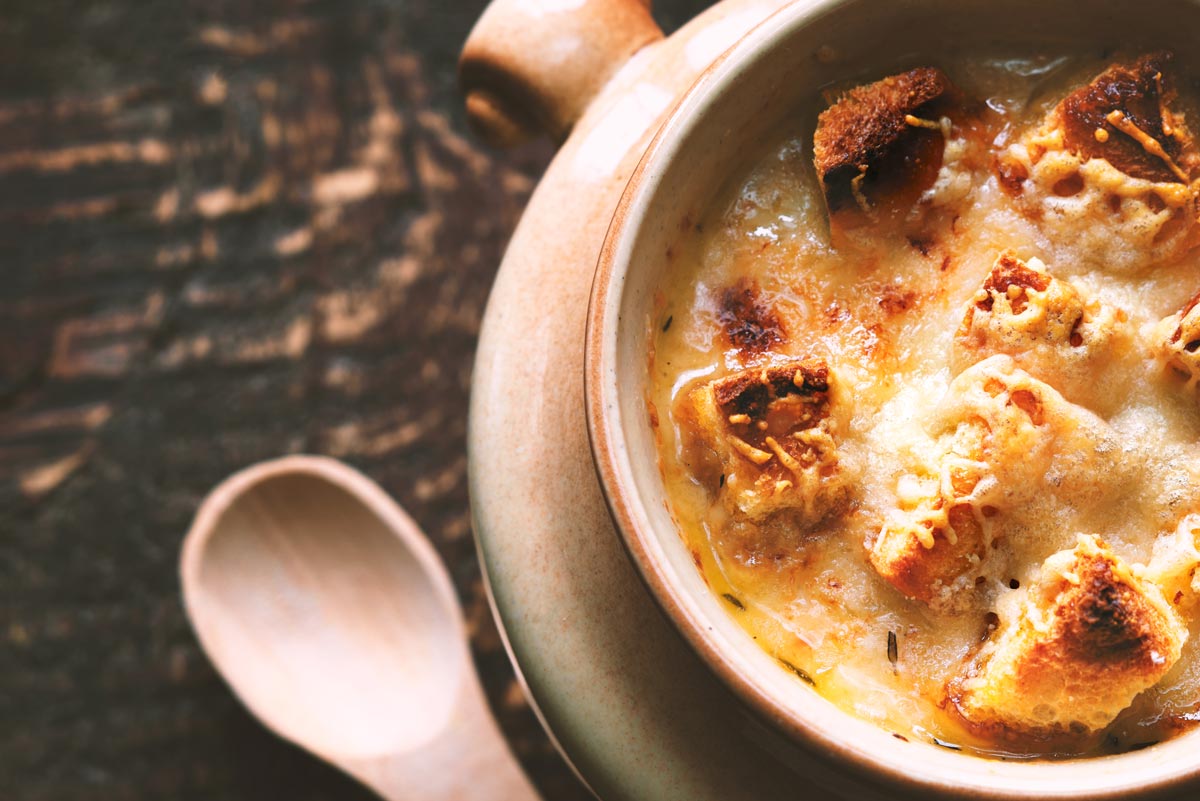This recipe shows off the versatility of focaccia dough. Yes, you can top it with cherry tomatoes, onions, red pepper, and more, but you can also stuff it! If you’d like to use this dough for a more traditional focaccia, simply divided in half as directed, then bake in a single layer in two 13-inch-by-9-inch pans and starting checking after 25 minutes.
Ingredients
- 1 tablespoon active dry yeast
- 2 cups warm water, between 105°F-115°F
- 1 tablespoon honey
- 7 tablespoons extra virgin olive oil, divided use, plus more for dipping
- 5 cups all-purpose, bread, or 00 flour, plus more for kneading
- 1 teaspoon sea salt
- 16 ounces mozzarella
- Optional toppings: slivers of onion, fresh rosemary needles, very coarse sea salt
Directions
Step 1
In the bowl of a stand mixer fitted with the paddle attachment, mix the yeast, water, and honey for a few seconds. Allow the yeast to bloom (get foamy), about 5-8 minutes. Add 2 tablespoons of olive oil, salt, and flour, and mix until a sticky dough forms. Switch to the dough hook and knead until smooth and elastic; it will be sticky, but should pull away from the sides of the bowl as you lift it. Only if it is too sticky to handle, add more flour, one tablespoon at a time.
Step 2
Note: If you don’t have a stand mixer with a dough hook, bloom the yeast, water, and honey in a large bowl. Add the olive oil and salt and then the flour, mixing with a large spatula and then with your hands. Turn the dough out on a lightly floured countertop, flour your hands, and knead until smooth, about 7 minutes.
Step 3
Pour 1 tablespoon of olive oil into a clean, large bowl. With lightly floured hands, form the dough into a ball and roll it in the olive oil. Place the bowl in a warm spot in your kitchen and cover with a clean dish towel. Let rise until doubled in volume, about an hour. (If you poke it with a fingertip, it should spring back right away.)
Step 4
Pour 3 tablespoons of olive oil into a 13-inch-by-9-inch metal cake pan, and coat the pan well. Turn the dough onto a lightly floured countertop, punch it down lightly, and cut it in half. Place half the dough in the pan, and use your fingertips to press it out to the edges and into the corners of the pan. Liberally dot the dough with dollops of the cheese. Using your hands, stretch the rest of the dough into a rectangle about the size of the pan and then place it on top of the cheese layer, stretching it further out to the corners of the pan and pressing it around the edges to seal it to the bottom layer. Use your fingertips or knuckles to make a pattern of indentations on the top of the dough. Cover the pan with a clean towel and let it rest for 20 minutes while you heat your oven to 450°F.
Step 5
Just before baking, go over the indentations if needed. Then drizzle the final tablespoon of oil over the top and sprinkle on the onions, rosemary needles, and coarse salt, as desired. Bake for 35-40 minutes until golden, rotating the pan halfway through. Let cool for 5 minutes, then cut and serve with olive oil for dipping.
Yields 10 generous servings




